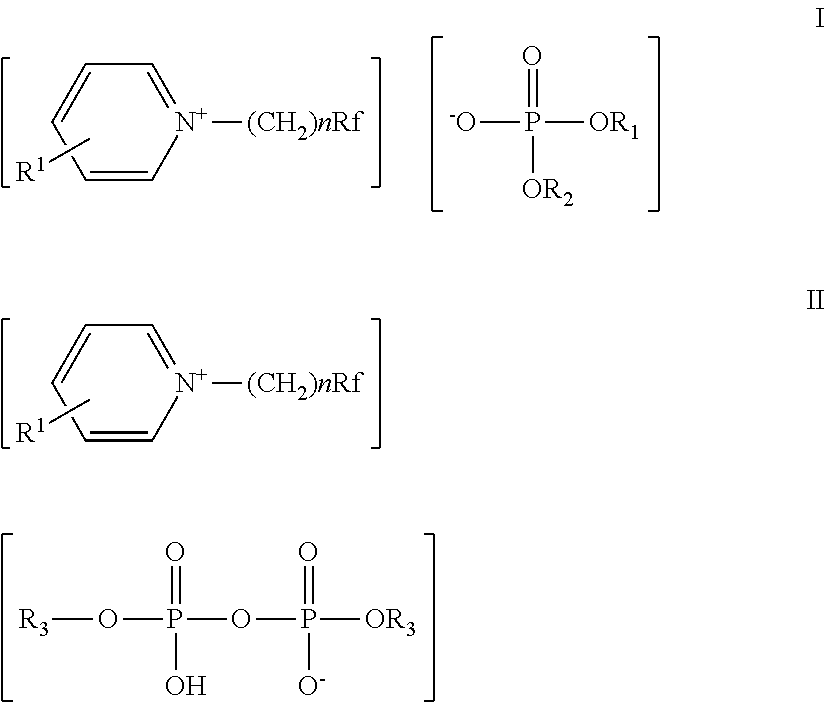Cleaning compositions and methods comprising a hydrofluoro-olefin or hydrochlorofluoro-olefin solvent
a technology of hydrofluoroolefin and composition, applied in the direction of detergent compounding agent, lighting and heating apparatus, applications, etc., can solve the problems of difficult to achieve the set of properties of cleaning compositions, the inability to dissolve many known surfactants in such solvents, and the inability to achieve the set of properties of such solvents, etc., to achieve the effect of superior and/or surprising unexpected results, high stability, and convenient displacing water
- Summary
- Abstract
- Description
- Claims
- Application Information
AI Technical Summary
Benefits of technology
Problems solved by technology
Method used
Image
Examples
example 1
[0070]The performance of the solvent-surfactant composition of the invention in the displacement of water was evaluated by placing 35 mL of the solvent 1-chloro-3,3,3trifluoro-I-propene containing 500 ppm by weight of octylphenyl acid phosphate salt of perfluoroalkyl prydinium (the surfactant prepared in Example 2 of 5,856,286) in a 100 mL beaker fitted with a cooling coil. The solution was brought to a boil whereby the coiling coil confined the solvent vapor to the beaker. Duplicate 316 stainless steel coupons, wet-abraded to a water-break-free condition, were immersed in water and then into the boiling sample solution. The time required to displace the water from the coupon was recorded, a minimum observation time of 5 second was chosen.
[0071]After an initial observation of drying performance, 35 mL of water was added to the boiling solution. The solution was kept boiling for 5 minutes in order to provide contact between the solution and the water. The mixture was then transferred...
example 2
[0073]The performance of a solvent-solvent composition of the invention in the displacement of water is evaluated by placing 35 mL of I-chloro-3,3,3-trifluoro-lpropene solvent containing 5% by weight methanol solvent in a 100 mL beaker fitted with a cooling coil. The solution is brought to a boil whereby the coiling coilconfines the solvent vapor to the beaker. Duplicate 316 stainless steel coupons, wetabraded to a water-break-free condition, are immersed in water and then into the boiling sample solution. The time required to displace the water from the coupon is recorded using a minimum observation time of 5 seconds. The solvent alcohol blend could remove water completely from the substrate.
PUM
| Property | Measurement | Unit |
|---|---|---|
| time | aaaaa | aaaaa |
| time | aaaaa | aaaaa |
| hydrophobic | aaaaa | aaaaa |
Abstract
Description
Claims
Application Information
 Login to View More
Login to View More - R&D
- Intellectual Property
- Life Sciences
- Materials
- Tech Scout
- Unparalleled Data Quality
- Higher Quality Content
- 60% Fewer Hallucinations
Browse by: Latest US Patents, China's latest patents, Technical Efficacy Thesaurus, Application Domain, Technology Topic, Popular Technical Reports.
© 2025 PatSnap. All rights reserved.Legal|Privacy policy|Modern Slavery Act Transparency Statement|Sitemap|About US| Contact US: help@patsnap.com



